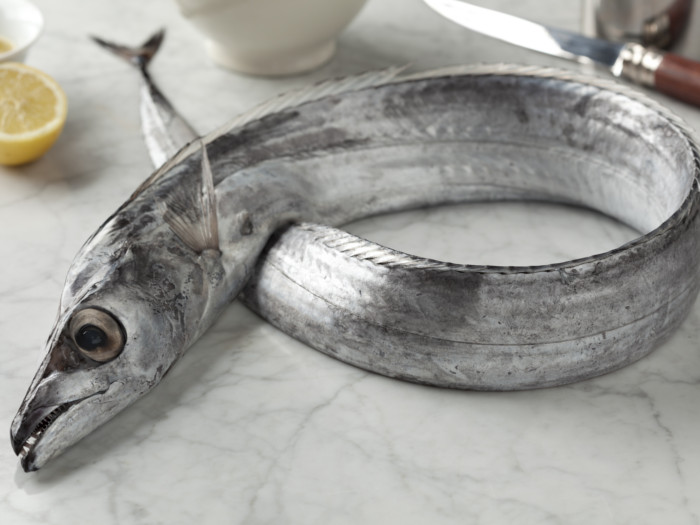Although not the most common type of fish, ribbon fish can deliver a number of nutrients for a healthy diet.
What is Ribbon Fish?
Ribbon fish is a general term for various species of deep-sea marine fish within the Trachipteridae family. With their elongated bodies, these fish come in three main genera – Desmodena, Zu, and Trachipterus. The largest specimens within this family can grow over six feet in length, although most species are between 2 and 3 feet in length. Found in all major oceans, they are rarely harvested on any large scale, since they reside in such deep waters. That being said, some species are fished for in California and other coastal waters, and they have mild, tender meat that easily flakes off the bone once cooked. [1] [2]
Nutritional Facts
In terms of nutrition, ribbon fish generally contains about 350 calories in a 100-gram serving, making them a very calorie-dense type of fish. The same serving also provides high levels of protein, as well as some B vitamins and high levels of sodium, as well as select polyunsaturated, monounsaturated, and saturated fats.

Ribbonfish are named for their slim, ribbon-like appearance. Photo Credit: Shutterstock
Health Benefits
There are a number of health benefits of eating ribbon fish, including the following:
- Boosting cardiovascular health
- Relieving inflammation
- Improving vision health
- Treating depression
- Treating arthritis and joint pain
- Clearing out blood vessels
- Boosting brainpower
- Improving skin appearance
- Preventing chronic diseases
- Promoting satiety
While these fish aren’t known as extremely nutrient-dense fish, they have omega-3 fatty acids that can help to boost cardiovascular health and reduce inflammation. By providing so many essential nutrients, this fish can also help to prevent chronic diseases, thanks to certain antioxidant components, and will generally keep you feeling full.
Note: Due to the high levels of sodium and calories in this fish, they should only be eaten in moderation.
